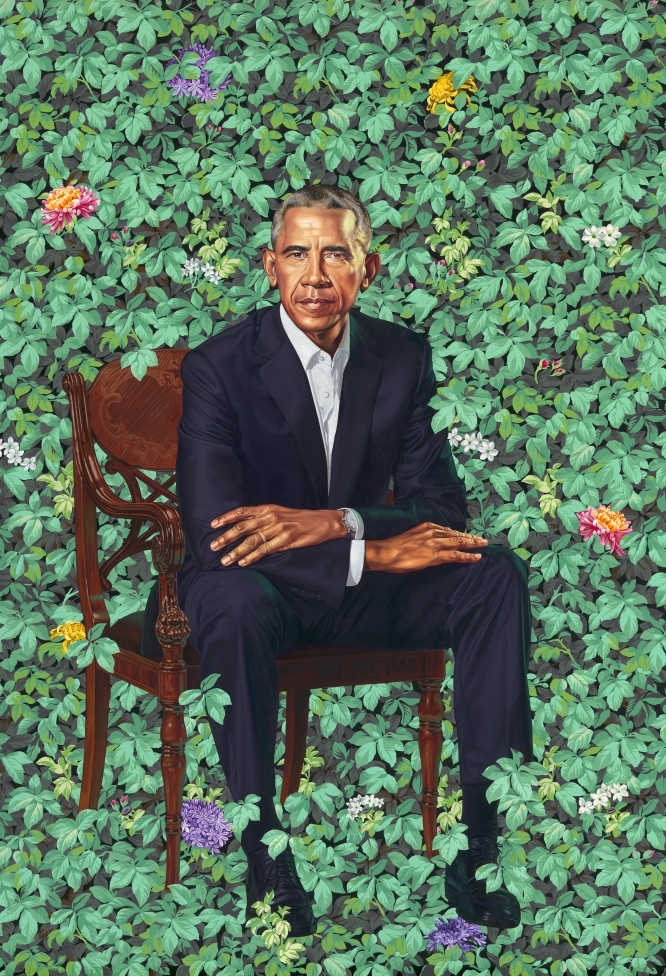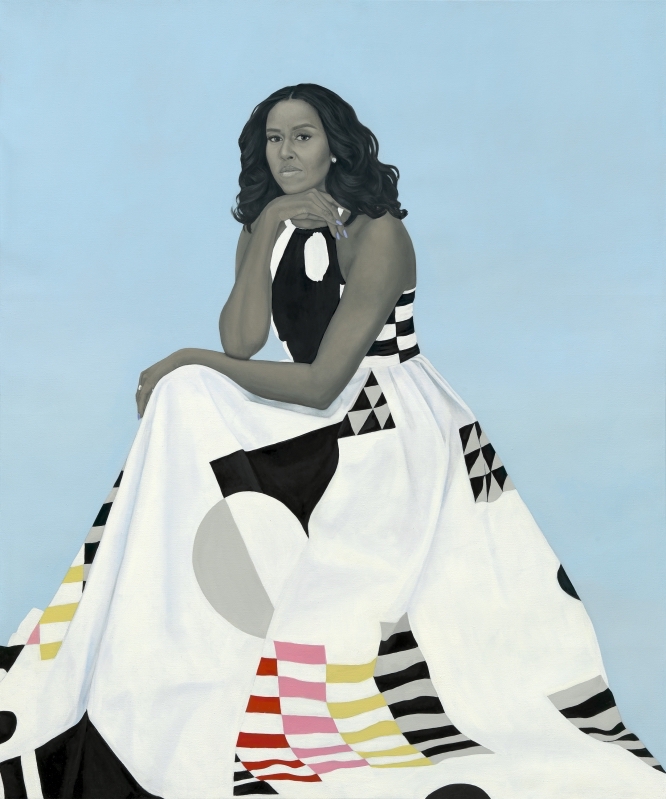Fine art can feel far removed from the day-to-day lives of most people. The fine art galleries of New York might see crowds of tourists every year, but the average New Yorker probably doesn’t consider how the portraits displayed in the Metropolitan Museum of Art relate to their own lives.
In fact, the recent decision to change the entrance fee for the Met — from a suggested fee of $25 to a mandatory one of $25 — is indicative of something about the fine art world which the general public have often felt: it’s out of touch. This reputation certainly isn’t helped by people like the new director of the National Art Gallery in London, who complained that the floating Yodas and other buskers outside were putting people off visiting.
While it’s certainly true that some people in the fine art world are out of touch, fine art itself remains a potent force. For evidence of this, look no further than recent events in Washington. In front of a packed crowd of the world’s press, Barack and Michelle Obama’s official presidential portraits were revealed at the Smithsonian. Immediately, these paintings showed how relevant portrait art remains — and how important artistic discussion still is — by utterly dividing opinion.
Some wrote passionate op-eds in the New York Times, questioning whether the blending of fact and fiction (with Barack Obama’s portrait having some clear magical realist elements to it) was really appropriate for such a divisive historical figure. Then again, perhaps this was the artist’s intention. In an era of fake news, is the aim of Obama’s portrait to question our ideas of fact and fiction?
Critics of Michelle Obama’s portrait were much more direct, saying that it looked like someone else. Others defended this as a brave artistic decision that forced us to consider the ex-First Lady as more than the persona she has presented to the camera over the last 10 years.

Barack Obama is also interacting with his background. However, where Michelle Obama is fading away, he seems to be drowning, with the green leaves already swallowing parts of his chair and his lower body.
What does all this mean, though?
As Oscar Wilde once said, “Diversity of opinion about a work of art shows that the work is new, complex, and vital.” Over a century later, he’s still right. Just as the internet exploded over its diversity of opinion towards Star Wars: The Last Jedi, so too did it explode over diversity of opinion towards these portraits.
If fine art is able to trend on Twitter with just as much passion and fury as a new Star Wars blockbuster can, how could we possibly say that fine art is not relevant? We can’t. Rather, we should be celebrating the fact that fine art is more accessible than ever before.

In short, the internet has democratised fine art in much the same way that it has democratised video making (with YouTube) and publishing (with blogs). However, that’s not the only reason why these paintings represent hope for the fine art world. After all, it’s impossible to ignore the fact that these are two fine art portraits produced by two African-American artists depicting the first ever African-American President and First Lady.
This context, too, shows how fine art is relevant in 2018. It’s not a medium which exclusively consists of old, white men painting other old, white men. There is much more diversity in the fine art world than people might realise, and these paintings show us this.
Fine art relies upon years upon years of technique, but it also encourages inventiveness. In fact, a tradition as old as fine art itself is the invention of new techniques and new schools of art. Even still, it’s easy to dismiss all of this as not in keeping with the fast pace of the modern world. Who cares about these traditions, these dead painters, and these artistic schools?
Yet, the combination of joy and vitriol the public has experienced while viewing the Obama portraits shows us that people still do care about the direction in which fine art is headed next.
Image credits:
Michelle LaVaughn Robinson Obama by Amy Sherald, oil on linen, 2018. National Portrait Gallery, Smithsonian Institution. The National Portrait Gallery is grateful to the following lead donors for their support of the Obama portraits: Kate Capshaw and Steven Spielberg; Judith Kern and Kent Whealy; Tommie L. Pegues and Donald A. Capoccia.
Barack Obama by Kehinde Wiley, oil on canvas, 2018. National Portrait Gallery, Smithsonian Institution. The National Portrait Gallery is grateful to the following lead donors for their support of the Obama portraits: Kate Capshaw and Steven Spielberg; Judith Kern and Kent Whealy; Tommie L. Pegues and Donald A. Capoccia.
[alert type=alert-white ]Please consider making a tax-deductible donation now so we can keep publishing strong creative voices.[/alert]
